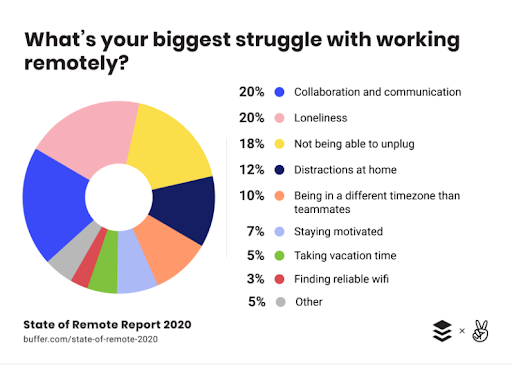
COVID-19 trapped every individual into the cage of their own home. We have taken our offices to our homes during the pandemic to continue the workflow. While working from home, we have all faced the same difficulties and have found ways to overcome them. However, the employees have found ways to escape the working hours, affecting their productivity and the organization’s output. As an employer, the biggest concern is how to keep track of your employees’ activities?
Tools That Help You Track Your Employee
With technology in the picture, every task is simplified. It is the technology that has made it possible to track your remote employees using the following tools.
1. Cloud Storage Tools
Your employees deal with confidential and highly essential company data. This personal data is at risk of exposure when the employees are working from home. There are chances of misplacing or theft in case of physical storage. Having the data in a soft copy in the employee’s computer system is an option. However, the computer systems are not highly secure, and it is elementary to hack through the systems of these computers. For this reason, it is recommendable to employ the file storage tools in the working from home solution.
The organization needs to ensure that the cloud software they use for the documentation storage is proficient in security and other sections. Many software available in the market offer high protection but fail to provide enough storage sizes, speed, and file sharing. Tools like google drive, dropbox, etc., are highly in demand in this sector. These days, the human resource solution application also provides cloud storage modules with the basic HRM software. You can track your employees’ work by having shared access to the documents. The shared access gives you a real-time view of the employee’s work, allowing you to monitor their work consistency.
2. Video Conferencing Tools
Over the last few months, the significance of video conferencing has skyrocketed. All of the meetings are held on the video conferencing platforms. In the pre-pandemic era, video conferencing did not carry much essence. Due to this reason, not many people attended video meetings, and having a video conference on applications like WhatsApp or Google Duo would do the trick.
Fast forward to the current scenario. It becomes necessary for all the employees to attend the meeting. Applications like WhatsApp have a limit to the number of members who can join a video call. To include all the employees, it becomes necessary to have video conferencing applications like zoom or skype made particularly for video conferencing and hence provide high-quality service and allow a large number of employees to join the meeting.
3. Chat Tools
Emails have become old school and outdated. Chat tools have taken over the communication system as it provides more insight and information about the communication process. The mailing system does not show whether the person on the other end has received the message. The employee has to wait without knowing if the receiver has received the message or not.

On the contrary, the chat tools allow you to have a clear knowledge of whether the receiver has received your message or not. As an employer, this enables you to track how long an employee takes to report to you. In extreme cases, this can be used to know whether the employee is working from home or whether they have kept the system on while they are AWOL.
4. Project Management Tools
When the employees are working from home, they have a lot of distractions around them. Sometimes, they can resist these temptations, while sometimes, they give in to them. Project management tools like Trello or Todoist enable the employer to know how much time the employee is spending on a particular task or project. With these tools, the employer can keep track of the employee’s productive and unproductive time during office hours. The employees have to report the tasks completed by them on this platform. With this facility available, the employer can determine how much time the employee spent on the job; it was productive or not, etc. The employer can use this data to reward or warn the employee about their performance.
There are chances that the employee was given a task, but while completing the job, he got distracted or decided to take a nap. These factors increase the time spent on a particular project. When the employee knows that this time adds up to the time spent on that task, he will avoid wasting his time on unproductive work. This way, the employer can indirectly control the time wasted on the employee’s unproductive tasks during the working hours.
5. Remote Work Management Software
Remote work management software includes all the functions mentioned above. This software comes with features like geo-fencing or geo-tracking, which allow the employer to know the employee’s movement. Geo-fencing allows you to mark a virtual border in a particular place. It enables auto punch in/ out when the employee comes in or goes out of the border. Geo-tracking allows the employer to track the physical location of the employee during working hours. This software is compatible with mobile hr software and enables employers and employees to perform necessary functions/ applications from their mobile phones.
Many employees may not be comfortable with the idea of using this software because they might feel that their privacy is violated. However, they must realize that these functions are performed only during office hours and not during the rest of the day.
Additionally, you can suggest your employees to use asynchronous video recording tools like StoryXpress Screen Recorder to make their work more productive and internal communication smoother.
Ending Note
This year has been challenging for every individual. The businesses have suffered the most. The economy has never been so stagnant or downward moving in decades. With months of operational activities lost already, the company cannot afford to have more unproductive hours, and it becomes a need to keep track of the employees’ actions. Depending on the organizations’ needs, you can combine these tools to bring out the best in your employees and your organization eventually.




